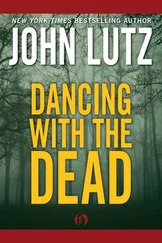The South is a famously talky place. The quintessential Southerner, William Faulkner, wrote, ‘We have never got and probably will never get anywhere with music or the plastic forms. We need to talk, to tell, since oratory is our heritage …’ Even bones talk sometimes. Even when they’re in the ground. There is a story from the South Carolina coast called The Three Pears , or The Singing Bones , about a little girl who exasperates her mother by eating pears meant for a pie. Understandably peeved, the mother chops the girl up with an axe and buries the pieces around the farmyard. The head is packed off to the onion patch, which next spring bears a ‘fine mess’ of onions. Sent to pick them, the son hears the ground singing:
Brother, Brother, Brother
Don’t pull me hair
Know mama de kill me
Bout the three li’ pear
Eventually her bones testify to everyone in the family, and the mother gets so frightened she runs into a tree and dies.
When I first encountered this story I thought, imagine what a ruckus a Southern cemetery would kick up. So many bones prattling on about this and that, that you wouldn’t be able to hear yourself think. Strangely, this old rural tale is what surfaced in my mind as I was swept out of the Atlanta airport in my new rental car, into a twelve-lane funnel of life moving at top speed. ‘Such a metaphor,’ I scribbled on a note pad, risking annihilation as truckers passed me at 80 mph, and Highways 75 and 85 blurred together in a whirlpool of relentless motion. Atlanta is a city on the move, shamelessly advertising America’s infatuation with roads and size and moneymaking right in its freeway-bound heart. No time for death here, much less quaint talking bones. If there were any, I felt sorry for them: no one would be able to hear their chants in the din.
Actually, that is not quite true. Atlanta discovered some of its own old bones a few decades ago, and they shout their message – ‘Make Money!’ – loud and clear, which is probably why the story came to mind in the first place. In the center of the city is a four-block grotto of unearthed, nineteenth-century cobblestones called Underground Atlanta, excavated and rebuilt as a tourist mecca of glitzy shops and restaurants. These skeletal streets were the foundations of the original city, begun in 1837 and first called Terminus, appropriately enough, for the railroad speculation venture that it was. The district wasn’t burned by General Sherman’s Union troops in the Civil War; it was buried to make way for a railway aqueduct. What began as a commercial venture died as one, only to be resurrected over a century later on behalf of yet another kind of commerce. It is the Atlanta way.
Those who don’t hear the call of money beneath the city chase it toward the sky. Office and shopping towers sprout in clusters throughout the metropolitan area like so many galvanized steel ladders to the future (getting from one to another means that Atlanta residents spend more time commuting in cars than any other Americans, each logging around thirty-five miles a day). It is no accident that Tom Wolfe’s recent novel, A Man in Full , hinged on the fortunes of a reckless Atlanta speculator who built a skyscraper too high for his wallet. Not so much fiction as parable, Wolfe’s story of success-run-rampant tells the tale of the city’s recent history. In the 1990s metropolitan Atlanta saw the greatest population increase in America. It currently consumes fifty acres of forest land per day to pave way for new construction. The city is, in fact, the epicenter of an economic boom so great that if the eleven states of the former Confederacy were lumped together as a separate nation, they could claim the fifth largest economy in the world (equivalent, so I’m told, to Brazil).
This is the ‘New South’ that so many speak of: socially liberal and friendly to big business – an attractive combination paid for in road congestion, air pollution, and overdevelopment. Yet Atlanta was on the make long before CNN, Coca-Cola, and the 1996 Olympics arrived. It has always been what some are complaining it has now become: a work-ethic driven, live-and-die-by-the-dollar, Northern kind of city, noisy and fast and flush with money.
Atlanta was the first stop on my first trip to the South. Over the course of the summer I planned four separate journeys, with brief rest stops at home in New England in between. I knew that my travels would generously overlap themselves and one another: because I was using storytellers rather than states or cities as my coordinates, I expected to leave a messy trail on the map, but gather a rich earful en route. On this first trip I took Georgia for my base, with forays planned both north and south of the state. The other journeys would take in the eastern seaboard, Appalachia, and ‘the Deep South,’ which included Mississippi, Alabama, and Louisiana. More immediately, however, navigating Atlanta was my chief concern.
None of the people behind the desk at the Super 8 Motel in the heart of downtown had ever heard of Ralph David Abernathy Jr. Boulevard, which disturbed me. Abernathy was Martin Luther King Jr.’s right-hand man throughout the Civil Rights Movement. While nearly every town in the South with more than one stop sign has an Martin Luther King Jr. Boulevard, or at least an Avenue, most of the major cities have named something after Abernathy too, and it’s usually a pretty significant street. Atlanta is no exception, but it took two painters suspended on scaffolding in the motel lobby to shout directions down.
‘No one’s ever asked for Abernathy before,’ said one of the clerks.
I soon discovered why. Abernathy proved a conduit to Atlanta’s West End, an old African-American neighborhood of bungalows with sagging porches, pawn shops, fast-food restaurants, and corner stores hidden behind anti-theft grills. Conversational half-circles of chairs were set up here and there on the sidewalks but were all empty: already at 10 am steamy, near-tropical heat had a stranglehold on the day. Here, at last, was a restful nook in the city – a little ramshackle, but pleasantly quiet. I was no longer surprised it had been so hard to find: this neighborhood was the Atlanta anomaly, more Old South than New, where time was to be had in greater quantities than money.
All the bigger buildings seemed boarded-up, except one. Marooned on the shabby street was a well-kept monument to Victorian whimsy: a many-gabled Queen Anne-style cottage with yellow patterned shingles, tall chimneys, and a giddy wraparound porch that looked like a carnival train of painted wagons. This was the Wren’s Nest, former home of Joel Chandler Harris, the nineteenth-century newspaper man who gave the world Uncle Remus, and wrote down the Brer Rabbit stories.
I made my way onto the tangled grounds and a teenager named Matthew ran up and shook my hand. He lived nearby and was a summer intern at the house, now a museum. We traded confessions of childhood fears. He’d been afraid of hockey masks because the killer in Friday the Thirteenth had worn one; I’d thought pink paint could only be achieved by mixing white paint with blood, and one day insisted (on pain of sleeping elsewhere) that my room be painted blue. After these confessions we were buddies, and he showed me around the musty Victoriana: a full set of Gibbon in the library, windows shuttered against summer heat, tasseled lamps lit in the gloom, and 31 five-year-olds racing up and down the long, ‘dog trot’ hallway, the electric heels of their Nike sneakers flashing red. The five-year-olds and I had come to listen to Akbar Imhotep, a storyteller who had not yet arrived. While I waited for Akbar, I watched a slide show about Harris’ life, slightly unnerved that the rest of the audience consisted of a stuffed bear and rabbit – both dressed for church – and a fox in need of a taxidermist’s touch-up.
Читать дальше












